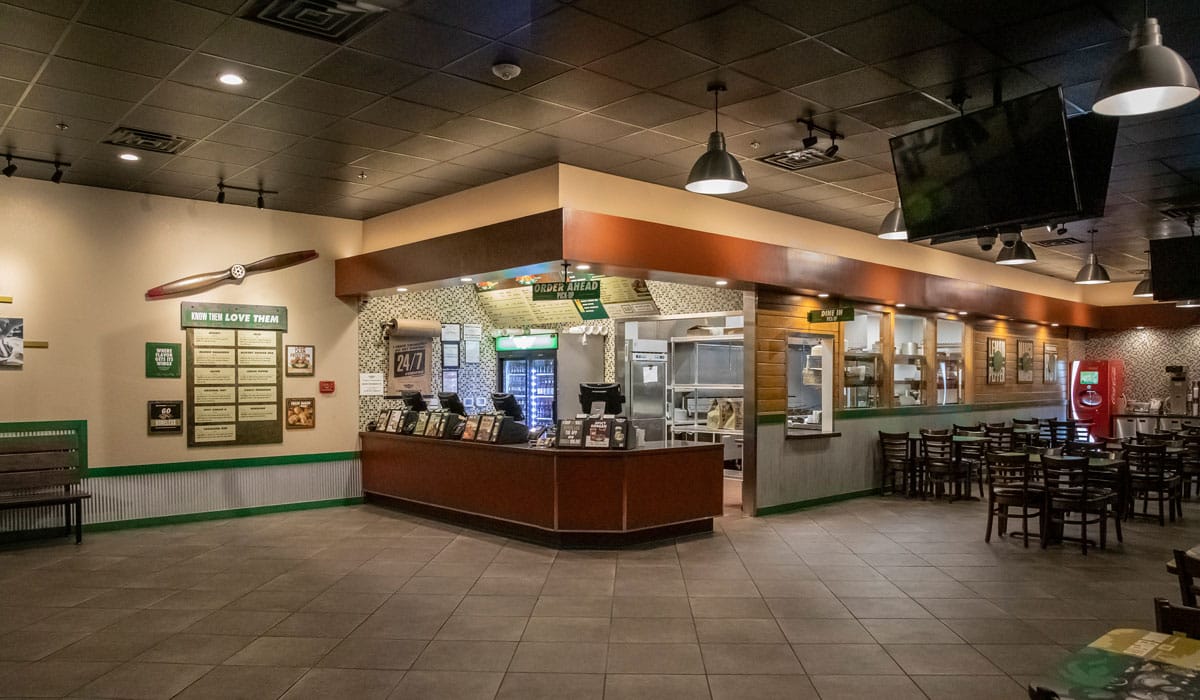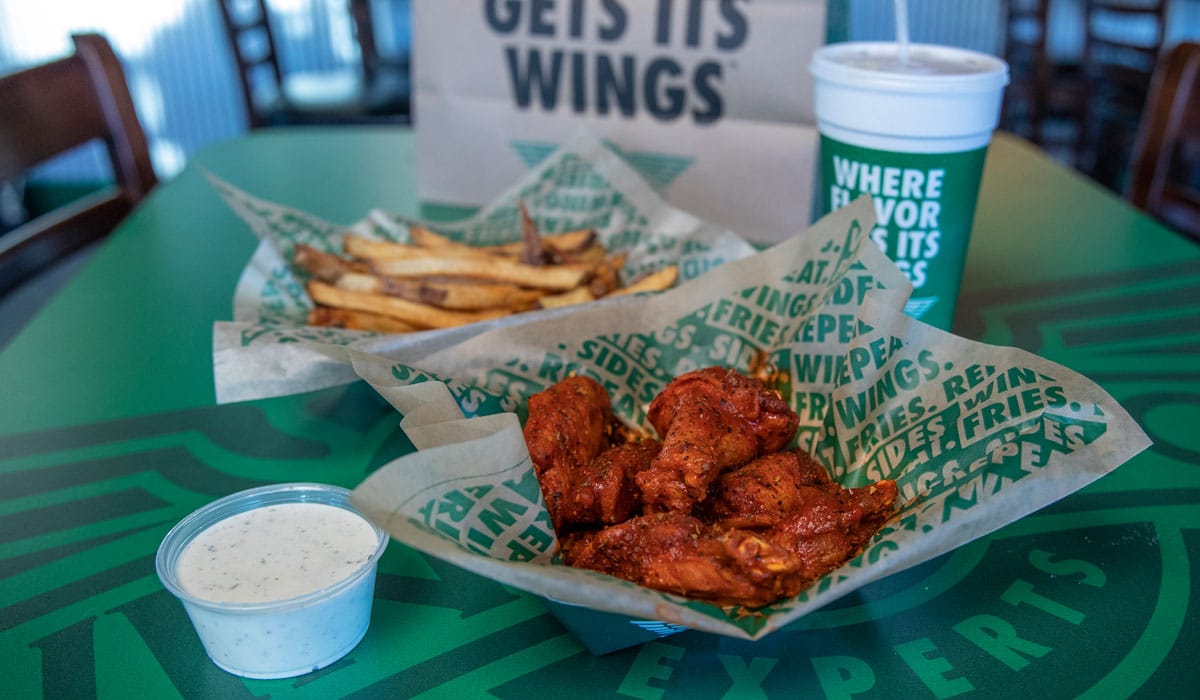As Wingstop marches toward its goal of becoming a top-10 global restaurant brand, the chain is ramping up focus on digital sales and delivery.
Digital sales reached 39 percent systemwide in December, and pushed past 40 percent in January. About 160 units have exceeded 50 percent and even more 60 percent, and those orders come with an average check $5 higher. Off-premises is around 80 percent of sales. There’s no desire for a loyalty program either; Wingstop prefers to rely on its CRM platform to connect with customers before and after their purchase, and it’s seen higher checks without discounting, as a result, the company said.
To help fulfill its objective of “digitizing every transaction,” the chain plans, this year, to heavily advertise delivery, 100 percent of which is digital. In Q4, delivery represented a low-to-mid-teen sales mix, but Wingstop believes those numbers should rise as advertising increases.
“Our pillar of sustaining same-store sales growth is supported by our strategies around national advertising, delivery, and digital expansion,” said CEO Charlie Morrison Wednesday during the company’s Q4 and annual review. “All of these contributed to industry-leading comps in 2019 and have us well-positioned for 2020.”
To Morrison’s point, Wingstop saw an 11.1 percent leap in domestic same-store sales in 2019 (1,231 units), the 16th straight year of positive growth. That’s also good for a two-year stack of almost 18 percent. In Q4, domestic comps rose 12.2 percent, while company-owned stores (31 locations) saw an 8.9 percent lift. U.S. stores achieved a record-breaking $1.25 million in average unit volume in 2019, as well. Total revenue increased to $199.7 million in 2019 and $53.2 million in Q4.
As you can see below, it’s been a torrid run:
- Q4 2019: 12.2 percent
- Q3 2019: 12.3 percent
- Q2 2019: 12.8 percent
- Q1 2019: 7.1 percent
- Q4 2018: 6 percent
- Q3 2018: 6.3 percent
- Q2 2018: 4.3 percent
- Q1 2018: 9.5 percent
- Q4 2017: 5.2 percent
- Q3 2017: 4.1 percent
- Q2 2017: 2 percent
- Q1 2017: –1.1 percent
The recent numbers came in despite a 7.6-percent increase in the cost of bone-in wings. Wing inflation is expected to be in the high single digits in 2020. Morrison said the brand sold 18 million wings during Super Bowl Sunday.
Wingstop opened 133 net new restaurants—45 in Q4—and ended with 1,385 units, representing 10.6 percent growth. The chain has 610 domestic units in the pipeline, with 80 percent coming from existing partners.
Internationally, Wingstop has another 154 restaurants, one of those being a dark kitchen in the U.K. that opened in Q4. Morrison said the space presents an opportunity for the brand to enter trade areas that otherwise might have been too expensive. The idea behind the spot also feeds into Wingstop’s wish to be more focused on delivery. The chain has seen strong results so far in the dark kitchen thanks to solid awareness built by brand partners.

“A good example might be a business hub in a large market where there’s a lot of daytime population, a lot of businesses that are there, but there’s no real retail presence,” Morrison said. “We could drop a kitchen in and make it available for delivery to our guests. What we learned in the U.K., we all know that real estate cost can be quite expensive there. And so there are areas that if we believe the brand awareness is sufficient that we can start to point people towards a delivery-only model through a dark kitchen.”
“… So it does give us some excitement about it, but it’s a data point of one, and I wouldn’t want to give any sort of indication as to what the future would be until we get a couple of these under our belt,” he added.
Wingstop invested $1.6 million in its international expansion strategy and that will continue with an additional $1 million to $2 million in 2020.
The company is continuing its experiment with pick-up lockers to make the digital ordering process more convenient, too.
The lockers allow guests to grab their order without interaction. Morrison said early results show lockers can address congestion issues, but Wingstop will be cautious because of the investment it requires.
“Those lockers require, as well, an investment in back-of-the-house technology, which becomes, if you will, the brains of the restaurant that sits on top of the point-of-sale system that takes online orders and customer information, directs those orders to the lockers as well as passes that information back to the guest,” Morrison said. “So both of those are substantial in terms of what it would take. And so we want to measure this very carefully before we approach our brand partners and say, ‘Hey, we think there is a legitimate opportunity here.’”
Wingstop has used technology to enhance speed of service and drive business in international markets, Morrison said, but the company is deciding whether it’s necessary in domestic units, specifically for nontraditional spaces. Morrison gave two main reasons for this. For one, U.S. locations don’t have issues with capacity, and AUVs are continuing to increase without the technology. Secondly, more of Wingstop’s domestic business is moving toward digital channels as opposed to walk-in customers that order at the counter.
“If you couple that with the fact that now our total off-premises business is around 80 percent of our sales, it would say that the issue we deal within the U.S. is less about that walk-in traffic, and we don’t have our locations positioned in heavy footfall areas where individuals eat a lot of our product,” Morrison said. “So, therefore, we’re able to really meet their expectations or drive them to digital occasions, which could be well-timed.”
Wingstop feels so good about its recent success that the chain is upping its three-to-five-year guidance on comp sales from low-single digits to mid-single digits. The CEO said the brand has the potential to reach 6,000 units—split internationally and domestically.
“I could not be more excited about the future of our brand,” Morrison said. “We remain confident in our strategies that we’ll continue to reward our shareholders, brand partners, and team members.”






